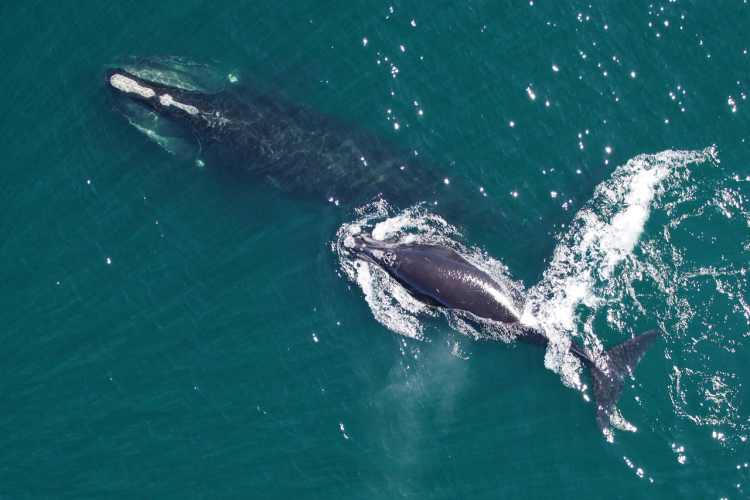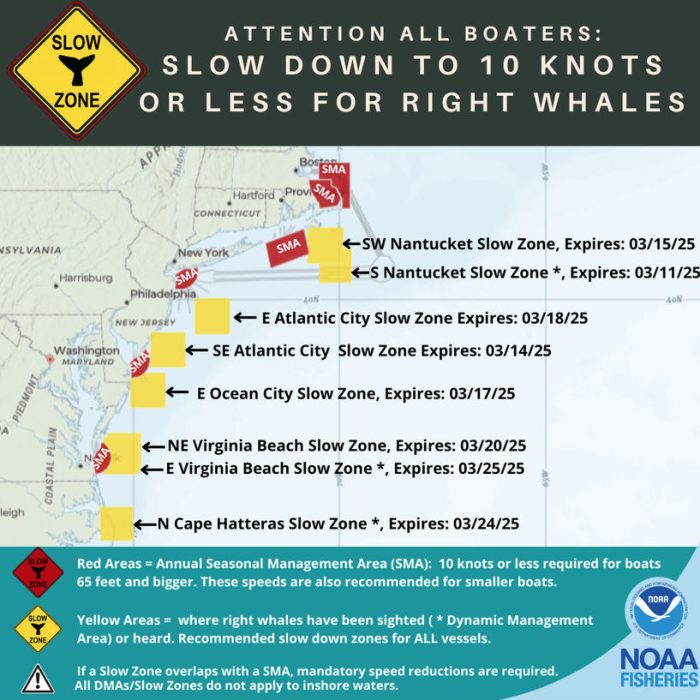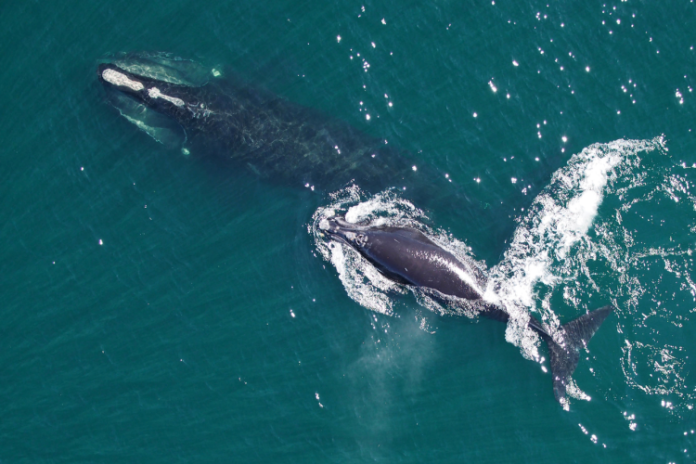
NOAA Fisheries has announced a voluntary slow zone has been implemented off the Outer Banks after endangered North Atlantic right whales were spotted offshore on Sunday.
There are approximately 360 individual North Atlantic right whales remaining, including fewer than 70 reproductively active females.
Vessel strikes are considered the primary threat to the whales because they spend a lot of time at or close to the water surface, and they are difficult to spot from a boat due to their dark color and lack of a dorsal fin.
To reduce the risk of collisions, most vessels 65 feet or longer must travel at 10 knots or less in certain locations along the U.S. East Coast at certain times of the year.
That includes an area up to 20 nautical miles off the mouth of Chesapeake Bay, Cape Lookout and Beaufort Inlet, and from Wrightsville Beach southward, between November 1 and April 30 when right whales are migrating and calving.
NOAA Fisheries also institutes voluntary speed zones elsewhere in coastal waters when there are visual sightings of three or more right whales within a discrete area, or their presence is detected using acoustical devices.
The program notifies vessel operators to slow down to avoid right whales, provides maps and coordinates to vessel operators indicating areas where right whales have been detected.
For a period of 15 days after a whale is detected, mariners are encouraged to avoid these areas or reduce speeds to 10 knots or less while transiting.
NOAA Fisheries withdrew in January proposed changes to vessel speed limit rules that included expanding the 10-knot speed restriction to include all vessels 35-feet and longer from northern Florida to the Northeast U.S. for up to seven months of the year, and would have introduced mandatory speed zones where right whales were detected.
After receiving approximately 90,000 public comments, the National Marine Fisheries Service cited insufficient time to finalize the regulation prior to the Trump Administration taking office as the primary reason for withdrawal.
On March 9, the North Carolina Early Warning System aerial survey team detected the presence of right whales north of Cape Hatteras.
The northern boundary is at 36°03′ N, the southern boundary 35°23′ N, the eastern boundary 75°01′ W, and the western boundary 75°49′ W.
The advisory off the Outer Banks expires on March 24.
A pair of separate speed advisories for whale sightings have also been issued off Virginia Beach through March 20 and 25.
Boaters and other interested parties can sign up for email or text notifications about the latest Right Whale Slow Zones. You can also follow on Facebook @NOAAFisheriesNEMA and Twitter @NOAAFish_GARFO for announcements.
Starting May 13, NOAA Fisheries will be sending text message alerts from a new, toll-free phone number: (844) 548-2865. This will replace the current 468-311 number.






